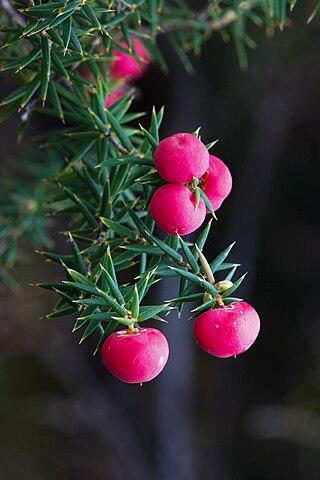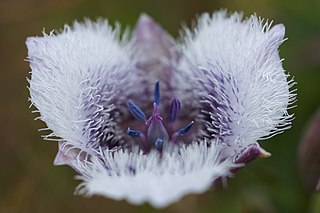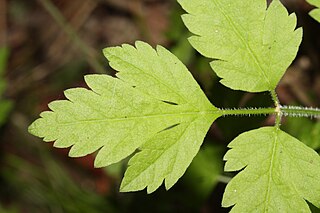
The Ericaceae are a family of flowering plants, commonly known as the heath or heather family, found most commonly in acidic and infertile growing conditions. The family is large, with c. 4250 known species spread across 124 genera, making it the 14th most species-rich family of flowering plants. The many well known and economically important members of the Ericaceae include the cranberry, blueberry, huckleberry, rhododendron, and various common heaths and heathers.

George Arnott Walker Arnott of Arlary was a Scottish botanist.

Anisopappus is a genus of flowering plants in the family Asteraceae.

Allium falcifolium is a North American species of wild onion known by the common name scytheleaf onion or coast flatstem onion. It is native to northern California and southern Oregon, where it grows in heavy, rocky soils, especially serpentine soils.

Grayia is a genus of plants in the subfamily Chenopodioideae of the family Amaranthaceae. Common names are siltbush and hopsage. The four shrubby species occur in arid and semiarid regions of western North America:

Grayia spinosa is a species of the genus Grayia in the subfamily Chenopodioideae of the flowering plant family Amaranthaceae, which is known by the common names hop sage and spiny hop sage. It is widely distributed across the Western United States, where it grows in a number of desert and mountain habitats.

Grindelia hirsutula is a North American species of flowering plant in the family Asteraceae known by the common names hairy gumplant and hairy gumweed.

Hazardia squarrosa is a North American species of shrub in the family Asteraceae known by the common name sawtooth goldenbush. It is native to California in the United States and Baja California in Mexico.
Holozonia is a North American genus of flowering plants in the family Asteraceae. It contains only one known species Holozonia filipes, which is known by the common name whitecrown. It is endemic to California.

Layia is a genus of flowering plants in the family Asteraceae known generally as tidy tips, native to western North America. Several are California endemics.

Calochortus tolmiei is a North American species of flowering plant in the lily family known by the common names Tolmie's star-tulip and pussy ears. It was discovered by and named for Dr. William Fraser Tolmie.

Calochortus uniflorus is a species of flowering plant in the lily family known by the common names Monterey mariposa lily and large-flowered star-tulip. It is native to western Oregon and to California as far south as San Luis Obispo County. It grows in moist areas, such as meadows, in coastal hills and lower-elevation mountains. Most of the populations are found in the Coast Ranges, but some occur in the Cascades and in the foothills of the Sierra Nevada.

Chaenactis douglasii is a North American species of flowering plant in the daisy family known by the common name Douglas' dustymaiden.

Corethrogyne is a genus of flowering plants in the family Asteraceae.

Corethrogyne filaginifolia is a species of flowering plant in the daisy family known by the common names common sandaster and California aster.

Nardophyllum is a genus of South American flowering plants in the tribe Astereae within the family Asteraceae.
Pachylaena is a genus of South American flowering plants in the tribe Mutisieae within the family Asteraceae.

Osmorhiza berteroi is a species of flowering plant in the family Apiaceae known by the common name mountain sweet cicely.
Acmella pusilla, the dwarf spotflower, is a species of flowering herb in the family Asteraceae. The plant is native to South America and is naturalized in the southeastern United States.
Erigeron velutipes is a North American species of flowering plant in the family Asteraceae known by the common names delicate fleabane and Chihuahuan fleabane.














